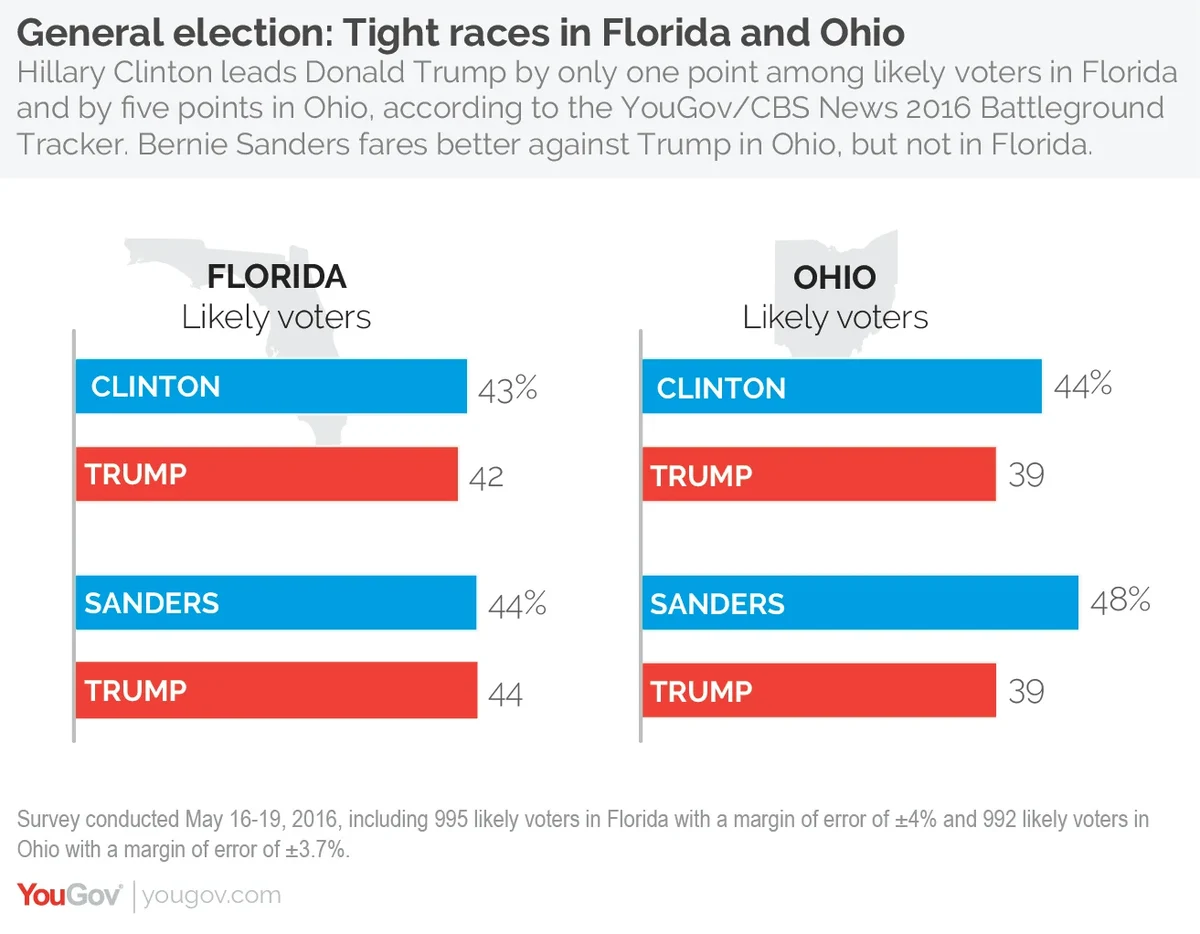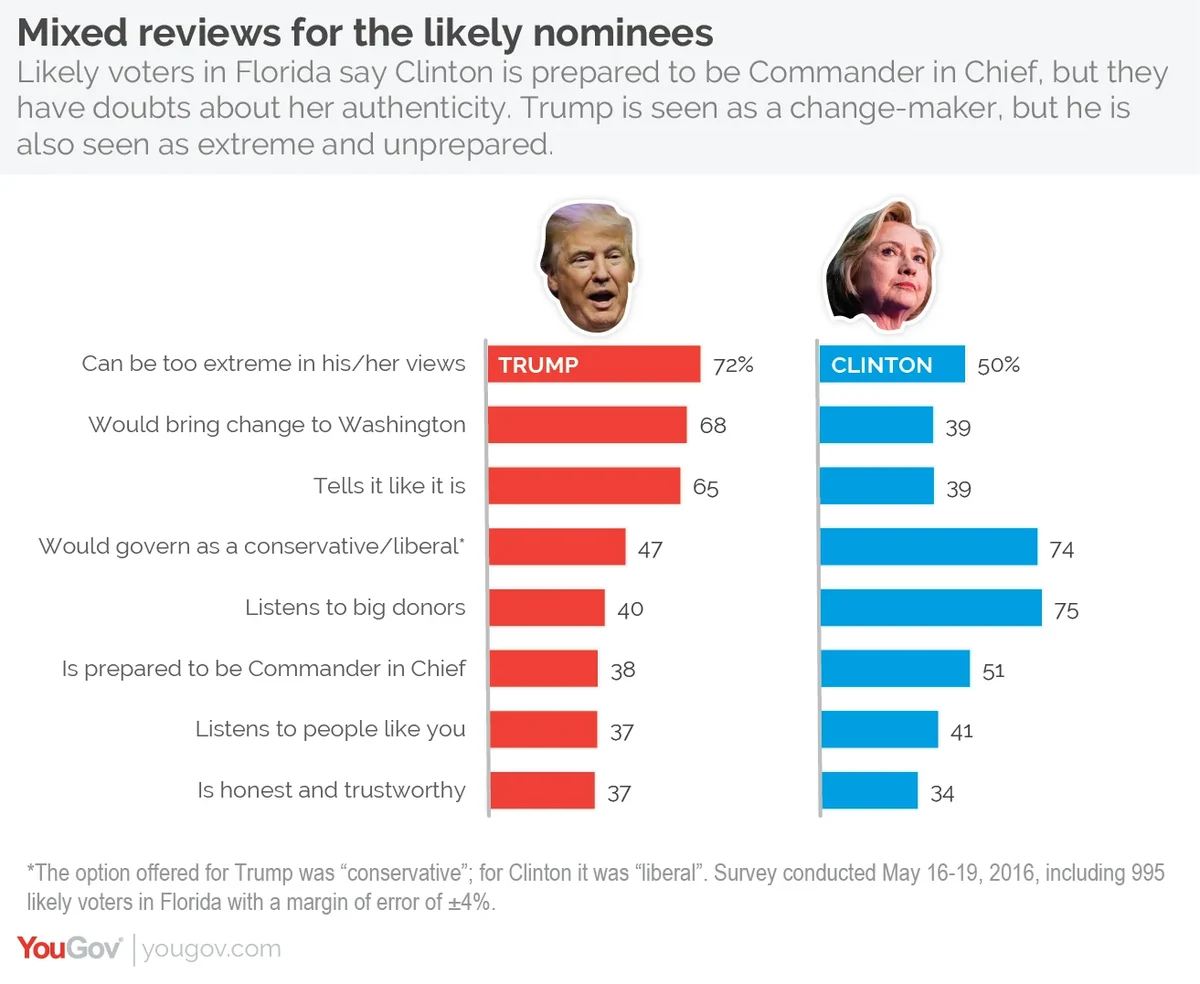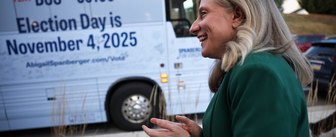YouGov polled likely voters in two crucial swing states in the latest wave of the CBS News 2016 Battleground Tracker
In a hypothetical match-up likely presidential nominees Hillary Clinton and Donald Trump are virtually tied in Florida and separated by just five points in Ohio, according to the latest wave of the YouGov/CBS News 2016 Battleground Tracker.
The poll of likely voters in Florida, the perennial swing state, found 43% would vote for Hillary Clinton if the election were held today, giving her a marginal 1-point lead over the presumptive Republican nominee, Donald Trump. Another 14% say they were undecided or would vote for a third candidate. Clinton’s advantage is more substantial – but still narrow – in Ohio, where the Democratic frontrunner leads Trump 44% to 39% with 10% undecided or opting for someone else.
Likely voters in the two swing states were also asked to pick between Trump and Bernie Sanders, who trails Clinton in the race for the Democratic nomination. Sanders is tied with Trump in Florida, 44% to 44%, but leads by nine points, 48% to 39%, in Ohio. Notably Trump receives the same share of support against Clinton and Sanders in Ohio – but some who would support Sanders move into the undecided or "other" column when considering Clinton.

Florida is worth 29 electoral votes, while Ohio is worth 18.
Trump’s candidacy has been unconventional, and he has indicated he might buck Republican orthodoxy on key issues like foreign policy and entitlements, but a Trump-Clinton race breaks down in familiar ways. Clinton leads among voters under 45 years old, while Trump leads with those who are older. In Florida, Clinton leads among black voters by 69 points, and leads among Hispanics by 14 points, but Trump leads among whites by 14 as well. There the gender gap is evenly balanced: Trump leads by nine among men while Clinton leads by nine among women. These are similar divisions to those seen in Florida in 2012, according to exit polls. Barack Obama defeated Mitt Romney in Florida with the slimmest of margins, 50% to 49%.
While it is much too early for polls to give a reliable indicator of the outcome in November, it reveals a closer race than many expected, in two relatively diverse swing states. The polls also preview some of the personal contrasts likely to shape the race. For example, Clinton is much more widely seen as prepared to serve as Commander in Chief, while voters think of Trump as someone likely to “tell it like it is” and bring change to Washington.

Nearly three-quarters of Florida voters also say Clinton would listen to big donors as president, echoing criticisms made by Bernie Sanders during the Democratic primary.
Mirroring national polling, both parties’ likely nominees inspire negative feelings with a majority of voters. In Florida, 56% have an unfavorable opinion of Clinton, while almost the exact same number, 55%, feel the same about Trump. Sanders’s negatives are much lower – 40% – though fewer voters overall have an opinion about him. In Ohio, Clinton’s negatives are 55%, Trump’s 59%, and Sanders’s 37%.
Among those not supporting Clinton, more than four in five say they would “never” vote for her. The number is slightly higher for Trump. This works out to around 48% of Florida likely voters who say they could “never” vote for Clinton, and around 50% who say the same for Trump. Clinton has a wider advantage in Ohio, where 46% say they would never vote for her, compared to 54% for Trump.
Both polls were conducted May 16-19, 2016 for the CBS News 2016 Battleground Tracker. 995 likely voters were interviewed in Florida with a margin of error of ±4%, and 992 likely voters were interviewed in Ohio with a margin of error of ±3.7%. A detailed description of the methodology used to carry out the surveys can be found here.
See additional questions and demographic breakdowns for Florida and Ohio.







